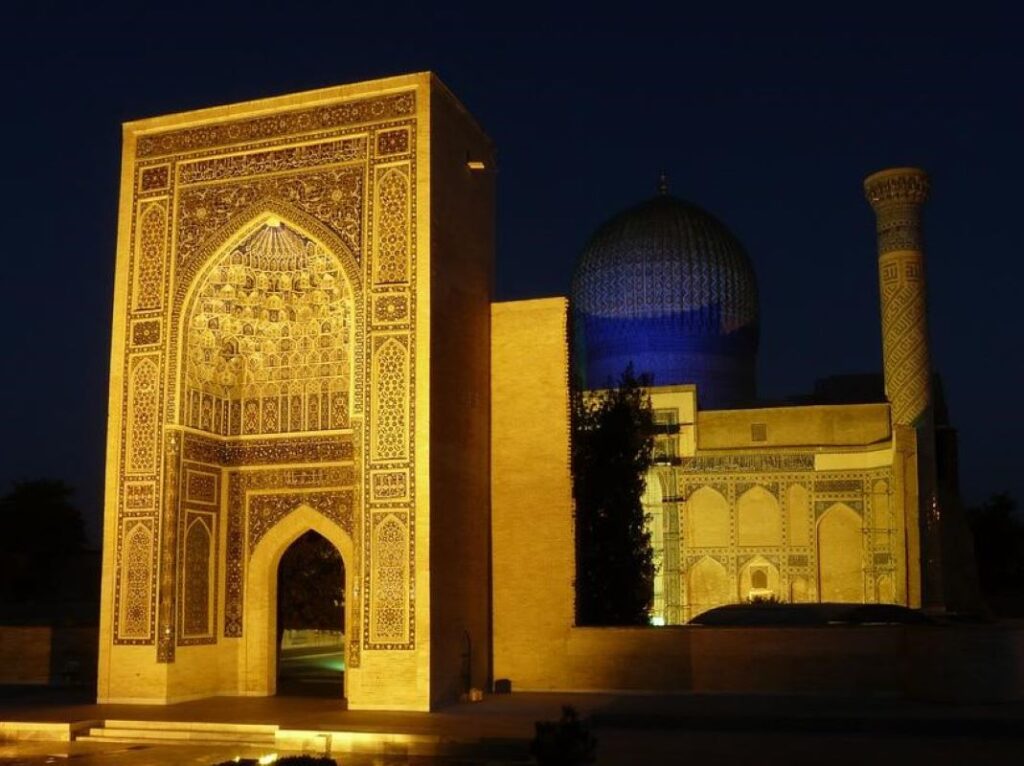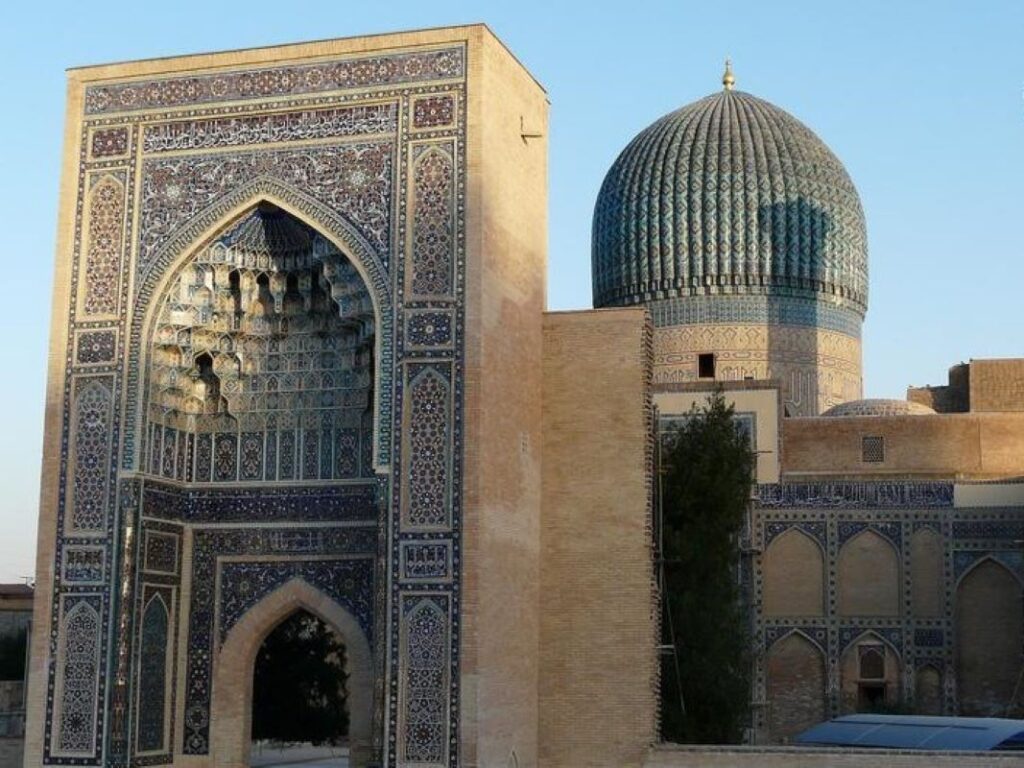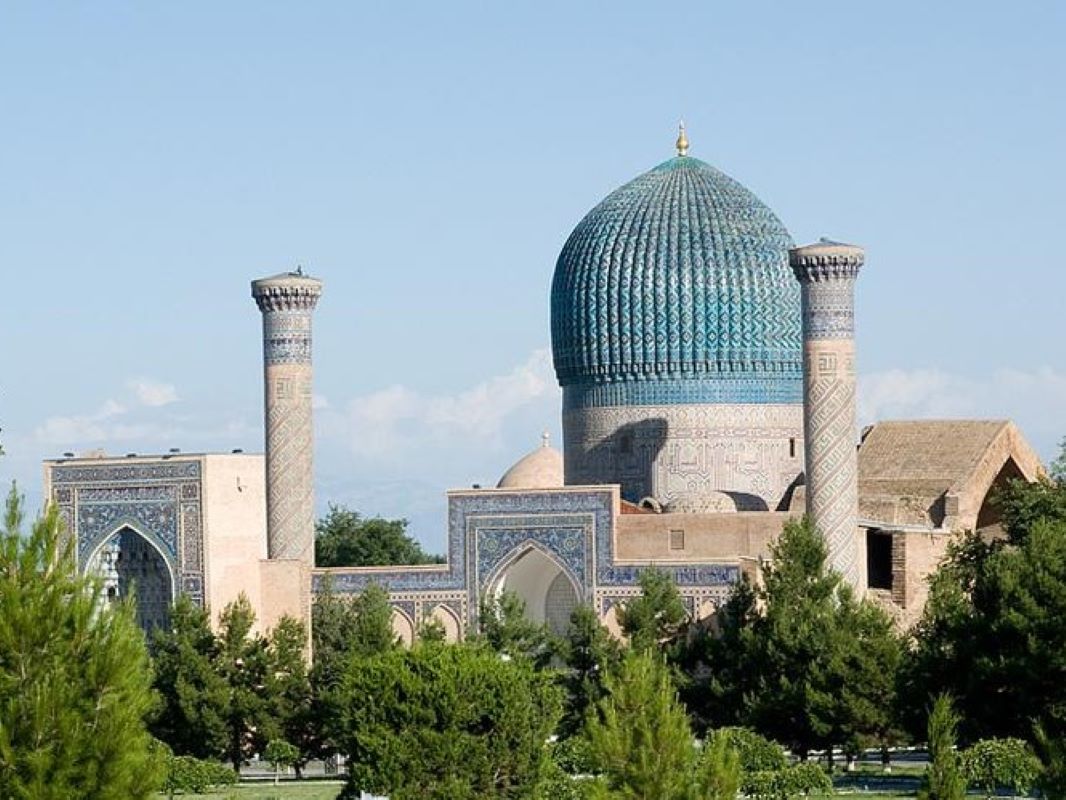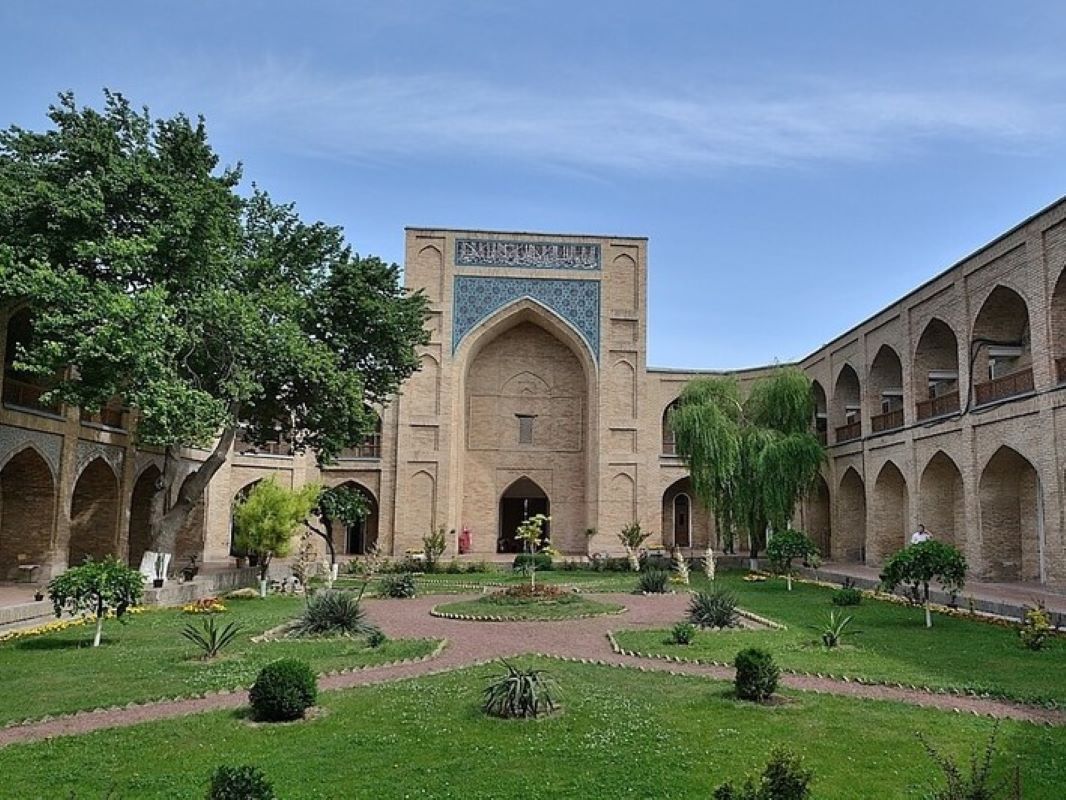The Gur-Emir is a mausoleum of the Turco-Mongol conqueror Timur (also known as Tamerlane) in Samarkand, Uzbekistan. It occupies an important place in the history of Central Asian architecture as the precursor for and had influence on later Mughal architecture tombs, including Gardens of Babur in Kabul, Humayun’s Tomb in Delhi and the Taj Mahal in Agra, built by Timur’s Indian descendants, Turco-Mongols that followed Indian culture with Central Asian influences. Mughals established the ruling Mughal dynasty of the Indian subcontinent. The mausoleum has been heavily restored over the course of its existence.
Here’s an overview:
History – The Gur-e Amir Mausoleum was built in the 15th century as the final resting place for Timur (Tamerlane), the renowned Central Asian conqueror and founder of the Timurid Empire. Timur had originally intended for the mausoleum to be a burial place for his favorite grandson, Muhammad Sultan, but after his own death in 1405, he was interred there instead.


Architecture – The mausoleum is celebrated for its exquisite architecture, characterized by a large blue dome adorned with intricate geometric patterns and calligraphic inscriptions. The exterior is decorated with turquoise tiles, while the interior features elaborate mosaics and marble carvings. The grandeur of the mausoleum reflects Timur’s ambition and the wealth of the Timurid Empire.
Design-The Gur-e Amir Mausoleum follows the traditional Central Asian architectural style, with a square base and a domed roof. It is surrounded by a garden and a boundary wall, adding to its serene ambiance. The mausoleum’s design influenced later Timurid and Mughal architecture, including the famous Taj Mahal in India.
Restoration-Over the centuries, the Gur-e Amir Mausoleum has undergone several restoration projects to preserve its historic beauty. The most extensive restoration occurred in the 20th century, following an earthquake in 1948 that damaged parts of the structure. Today, the mausoleum stands as a testament to the artistic and cultural achievements of the Timurid era.
Significance-The Gur-e Amir Mausoleum holds great cultural and historical significance for Uzbekistan and the wider region. It attracts visitors from around the world who come to admire its architectural splendor and learn about the legacy of Timur and the Timurid dynasty.
Visiting the Gur-e Amir Mausoleum offers a glimpse into the rich history and artistic heritage of Samarkand, making it a must-see destination for travelers exploring Uzbekistan’s cultural treasures.





